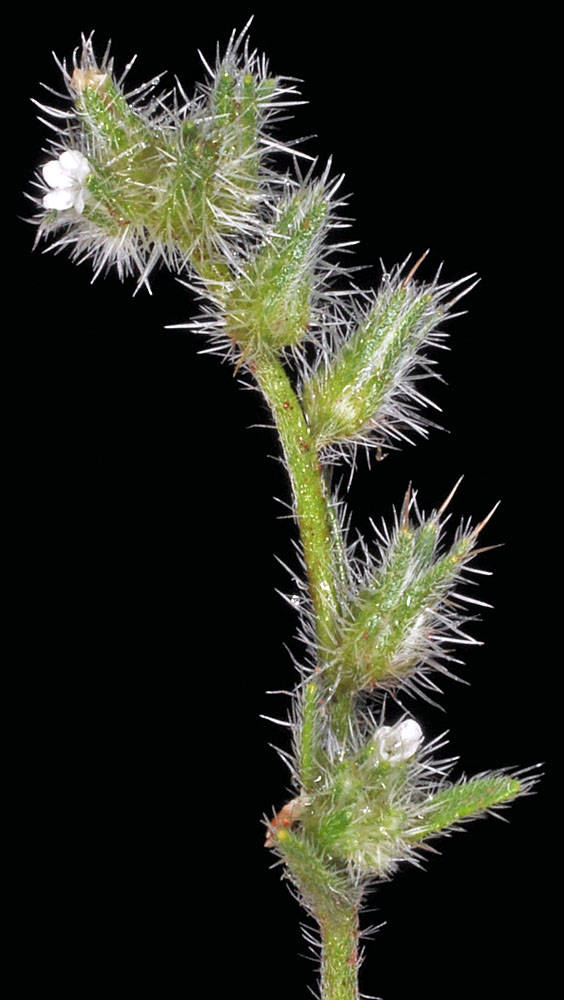
Plants 10–30(45) cm.
Stems erect, solitary or several-branched from base, branches usually many, loosely ascending to occasionally decumbent, strigose and spreading-hirsute.
Leaves basal leaves withering at maturity, mostly spatulate; cauline linear, narrowly oblong, or spatulate-oblanceolate, 20–40(50) × 1–3 mm, little reduced in size distally, midveins thickened abaxially, tips acute or rounded, surfaces appressed- to ascending-hirsute pustulose.
Inflorescences cymules solitary, occasionally paired, 5–15 cm in fruit, proximal-most flowers usually not touching; bracts present near base of cymules, similar to distal leaves; pedicels 0.5(1) mm in fruit.
Flowers ascending to spreading, tardily deciduous at maturity; calyces slightly asymmetric, lance-ovoid to urceolate, bases truncate to rounded, constricted distally, 1.5–2.5 mm at anthesis, 4–6(7) mm in fruit, lobes separate to base, linear to lanceolate, often yellowish, margins densely ascending-hirsute, midribs slightly thickened, widely spreading hispid, hairs pustule-based, tips erect to occasionally spreading, abaxial surfaces densely appressed- to inclined-hirsute, adaxial surfaces appressed short-hirsute near tip; corollas funnelform, tubes 1.5–2 mm, limbs 1–2 mm in diameter; fornices minute; gynobases extending to 65% and styles to 75% length of mature nutlets; flower bracts absent or occasionally subtending proximal-most flowers.
Fruits 3–4, homomorphic, ovate, somewhat compressed, (1.4)1.6–2 mm, grayish to brownish, bases truncate, margins rounded, tips acute to short acuminate, surfaces somewhat glossy, scattered low-rounded tuberculate, papillate between tubercles, occasionally becoming smoothish toward base, abaxial surfaces low convex, spinal ridges usually absent but occasionally obscurely present, adaxial surfaces 2-planed convex, attachment scars centered, edges not raised, usually abutted entire length, occasionally narrowly gapped, widely bifid-forked, but usually not gapped at base.
Gravelly or sandy soil of open slopes, open areas of shrublands, grasslands, coniferous forests, pinyon-juniper woodlands. Flowering Jun–Aug. 100–1900 m. BR, BW, Col, ECas, Lava, Owy. CA, ID, NV, WA; north to British Columbia, east to SD, southeast to CO. Native.
Cryptantha ambigua is distinguished by its small corolla size, strigose and spreading-hirsute stems, and 3–4 ovate nutlets with low, rounded tubercles. This species can introgress with populations of Cryptantha torreyana var. torreyana, their close relationship recently confirmed by molecular phylogenetic studies (Mabry & Simpson 2018; Simpson et al. 2017).